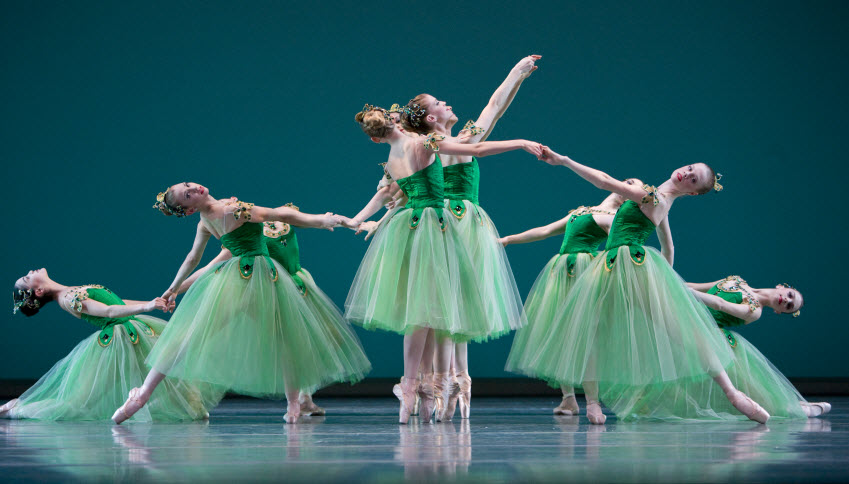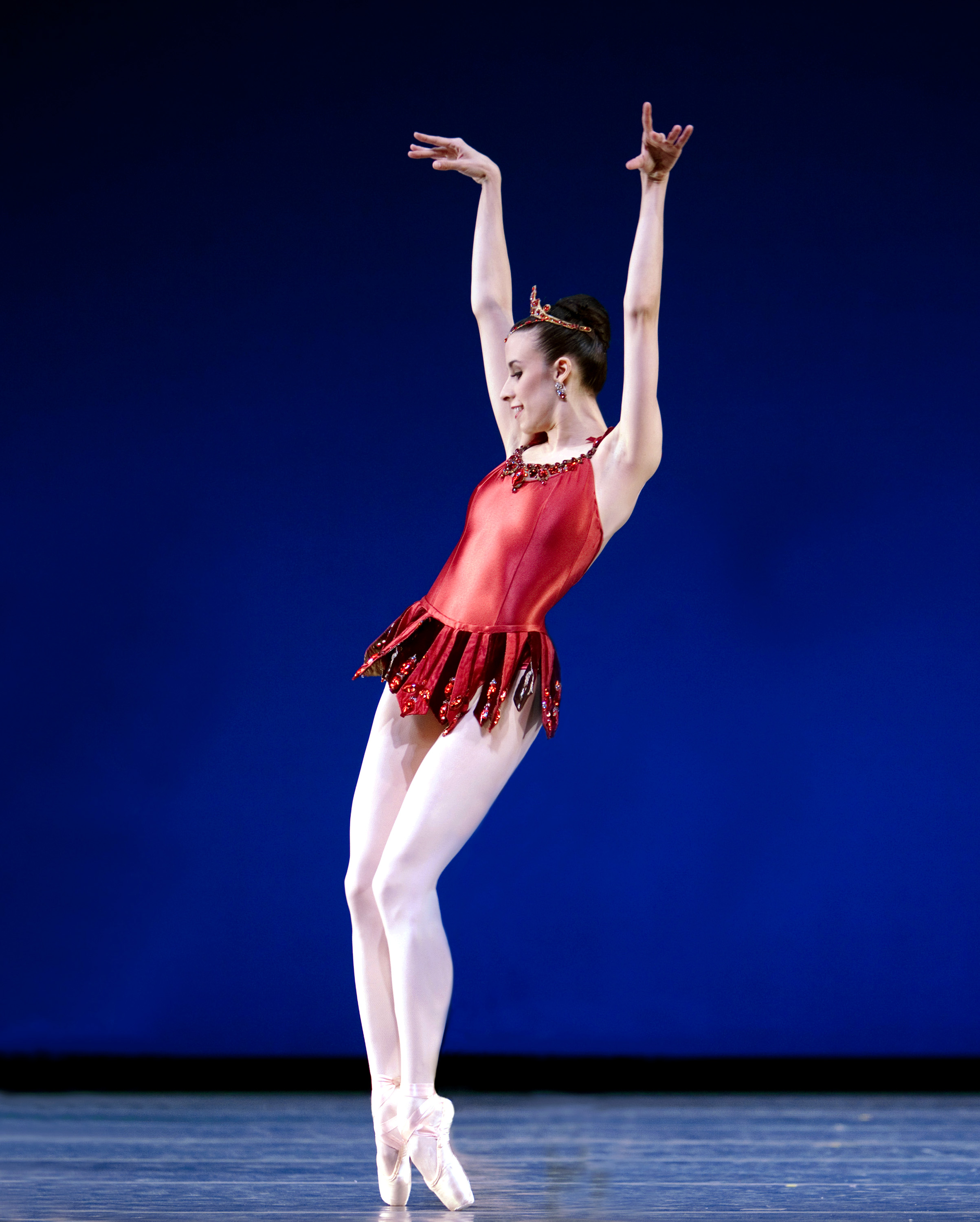What better way to introduce your child to non-narrative dance than with the world’s first plotless full-length ballet?
George Balanchine’s Jewels premiered in 1967, and has been a favorite with audiences ever since. Consisting of three parts separated by intermissions, Jewels does not tell a story, but provides plenty of drama.
Highlights
The first piece is "Emeralds," an elegant and fluid ballet that draws from the Romantic French tradition. Dancers in long green tutus perform to music by Gabriel Fauré. Although there is no story, my 5-year-old was able to confidently assert that "Emeralds" is about love.

The centerpiece is "Rubies," the shortest and most dynamic of the three dances. "Rubies" is modern ballet in all its forward-looking midcentury American glory, full of sassy, rule-breaking movements drawn from jazz. Dancers in fringed red leotards strut and pose playfully to music by Stravinsky. My 5-year-old declared "Rubies" her favorite of the three pieces because it was “silly.”
The performance ends with "Diamonds," a stately ballet that is as traditional as "Rubies" is cheeky. A reverential nod to the Imperial Russian Ballet where Balanchine trained, the all-white "Diamonds," set to music by Tchaikovsky, can feel a bit stiff after the freewheeling "Rubies."
But the majestic beauty of this truly classic ballet is impossible to ignore. Even though my daughter started to lose focus during the performance, when we talked about it later she admitted that "Diamonds" was the prettiest of the three pieces.

Should you take your kid?
Although it is traditional to introduce children to story ballets first, Jewels has plenty of visual interest, and the simple idea of “gemstones” may be easier for some young children to connect with than the more complicated characters and plot of a story ballet.
To engage your child further in the ballet, talk to her about the connections between the gemstone colors, the different styles of movement and the cultures they represent. If the dance captures their interest, older kids might appreciate the informal Q&A with dancers afterwards.
The entire program lasts about two hours and 20 minutes, including two 20-minute intermissions.

If you go ...
When: Jewels continues its run Oct. 2–4 at 7:30 p.m. and Oct. 5 at 1 p.m. Arrive early to allow time for parking, pre-ordering snacks and collecting booster seats.
Where: Marion Oliver McCaw Hall, 321 Mercer St., on the north edge of Seattle Center.
Tickets: Tickets start at $37 and go up to nearly $200. Every family member must have a ticket. Teens may be eligible for youth discounts and/or Teen Tix pricing. Contact the box office for details (206-441-2424). Tickets can be purchased online.
Which seats? Much of the appeal of a Balanchine ballet comes from the geometries of dancers on the stage, best viewed from above; feel confident buying the cheapest seats available.
Tips: Booster seats can be borrowed at no cost, and binoculars can be rented for $5. Snacks are expensive at McCaw Hall, but the cost supports the arts. You can bring snacks, but no food is allowed in the auditorium.
Parking: The Mercer Garage is connected to McCaw Hall by a sky bridge. Rates vary (up to $20) depending on events at Seattle Center. Other pay lots in the neighborhood have similar pricing. Street parking is limited to 4 hours, and hard to come by. Consider taking the bus – look online to plan your route.











